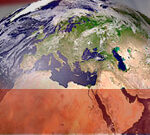Is it just my being “elderly” or are you also bothered by
encounters with the new oncoming auto headlamps with their
weird color and intense glare? The “green” movement has
focused attention on the need to reduce energy usage, not only
to conserve our sources of energy such as coal and oil but also
to reduce pollutants contributing to greenhouse warming and to
increasing health hazards. One way to save energy is to pay
more attention to the way we light our houses, offices, streets,
autos, etc. New light sources are being promoted, for example,
fluorescent and halogen lamps for the home or those auto
headlights. But these light sources have some disadvantages;
they”re more costly, sometimes less safe (fires in the home due
to overheating) and the light itself may not be as pleasing as
that from the ordinary incandescent lamp. There”s also the
problem of convincing the consumer to make the significantly
larger capital investment for a longer lasting bulb that in the
end will be less costly to operate.
There is another light source that has been quietly worming its
way into our lives in a manner that we hardly even notice. This
is the light emitting diode (LED). Those little green, yellow or
red lights on your computer, VCR or telephone are almost
certainly LEDs. You may not know that row of bright red
lights on the back of the car ahead of you is just a bunch of
LEDs. One of the neat things about LEDs is that they consume
very little power compared to the ordinary light bulb, which
also gives off a lot of heat. LEDs are even making their way
into traffic lights. There are millions of traffic lights
consuming billions of kilowatt-hours of electricity every year.
Replacement of all the incandescent bulbs in these traffic lights
would save perhaps 80-90% of that electricity. The LEDs
would also last a lot longer. Again, the labor and capital
investment to convert all the traffic lights is a major obstacle.
I am very fond of LEDs, having spent a decade working on
those little critters. The material we used was a compound
called gallium phosphide, formula GaP, just like the clothing
chain. Pure GaP is an orange material that, when sliced and
polished, looks like orange colored Lucite plastic. Like the
silicon in the silicon chip, GaP is also a semiconductor, sort of
in between a metal like copper and an insulator like most glass.
For those of you who care, the LED is simply a pn junction
(the diode) with a couple of wires attached. The pn junction is
the basic feature of all your transistors and silicon chips and is
formed by simply adding a little bit of this to one part of the
silicon and a little bit of that to the other part. “This” and “that”
for silicon might be arsenic and aluminum or zinc and sulfur
for GaP.
When I first joined the LED project in the Research Area of
Bell Labs in the early 60”s, we had to look through a
microscope to see the light coming from our pn junctions. The
beauty was that you really didn”t need any sophisticated
instruments or tests other than your eyeball to see whether or
not you were making progress. As time went on, we didn”t
need the microscope to see the light pouring out of the little
device. The GaP chips were typically about the size of the “o”
in this line of type.
Our first job was to make red LEDs. We could get red light by
adding zinc and oxygen to the GaP. Some of our theoretical
physicists didn”t believe the red was due to the zinc and oxygen
and proposed exotic theories for other sources of the light.
However, we simple-minded chemists knew we couldn”t get
the red out without them. Any good theorist can explain
anything, even if it”s wrong, and somebody finally showed zinc
and oxygen atoms sitting next to each other in the GaP
produced the red light. One of the great things about Bell
Labs was the opportunity to interact with the best physicists,
chemists and engineers in a friendly but competitive manner.
Eventually, we made the world”s brightest LEDs and I became
a supervisor of an LED materials group in the Development
Area at Bell Labs. I was in for a shock. It took us about a year
to make LED material that gave LEDs as bright as our LEDs in
Research. It was then that I appreciated that developing
something for practical application was not the simple matter
that many of us in Research had imagined. Fortunately, I had
the good fortune to have in my group some very good people
who made material that gave LEDs that were 4 times brighter
than our earlier LEDs. Eventually, Western Electric (now
incorporated into Lucent Technologies) manufactured GaP
LEDs by the millions for use in the old Bell System. (Yes,
Virginia, there once was a telephone system in the U.S. that
combined local and long distance, research and development,
and manufacturing in a regulated monopoly. If anything went
wrong you just called “the Phone Company”!)
Others at Bell Labs and elsewhere made green and yellow
LEDs by adding nitrogen to GaP or by using other compounds
of gallium. Today, almost 30 years later, by using these other
compounds and by working hard at encapsulating these LEDs
in the appropriate reflecting packages to minimize losses of
light, we have LEDs with brightnesses about 10 times larger.
When I was in the Research area, we had people asking if
LEDs could be used in traffic lights. We considered the
question to be ridiculous. How wrong we were!
You may remember that I mentioned in a previous column
working for NACA, the predecessor to NASA. I just searched
the NASA website and found an unexpected application for
LEDs in “astroculture”, agriculture in space. The LED not
only emits a lot less heat than an incandescent lamp but, by
proper choice of material, can be tailored to emit light of just
the right wave length for growing potatoes in space! Indeed,
experiments on growing potato, wheat and mustard plants took
place on one of the space missions in 1995. Farming in space
could well be a growth field but don”t go out and buy John
Deere stock yet. I think the astroculture market needs further
development!
Another more immediately rewarding application of LEDs if it
proves feasible is in the treatment of cancerous brain tumors.
Trials are in progress in which a light sensitive drug is injected
into a patient”s bloodstream and an LED probe is inserted in the
brain in the area of the cancer. The probe can be used for
hours at a time and the emitted light activates the drug which,
hopefully, kills the tumor. A more prosaic use of LEDs is in
your washing machine, replacing the laser that is now used in
some machines to sense turbidity of the rinse water and thus
controls the length of the rinse cycle.
LEDs have more frivolous uses. In 1970, I gave a talk at a
meeting in Los Angeles wearing a battery-powered tiepin
decorated with alternately flashing red and green LEDs. It was
a minor sensation. I was most impressed a couple years ago in
a Las Vegas showroom when a gorgeous, scantily clad young
lady circulated among the audience selling a number of novelty
items employing LEDs. The young lady”s costume was also
decorated with flashing LEDs in strategic locations. Being a
scientist, I naturally ignored her physical attributes and asked
about the power source for these embellishments. She said she
was planning to use lithium batteries (see a previous column),
with their higher voltages and longer life. Unfortunately, the
Folies Bergere show started and I couldn”t pursue this most
stimulating discussion.




